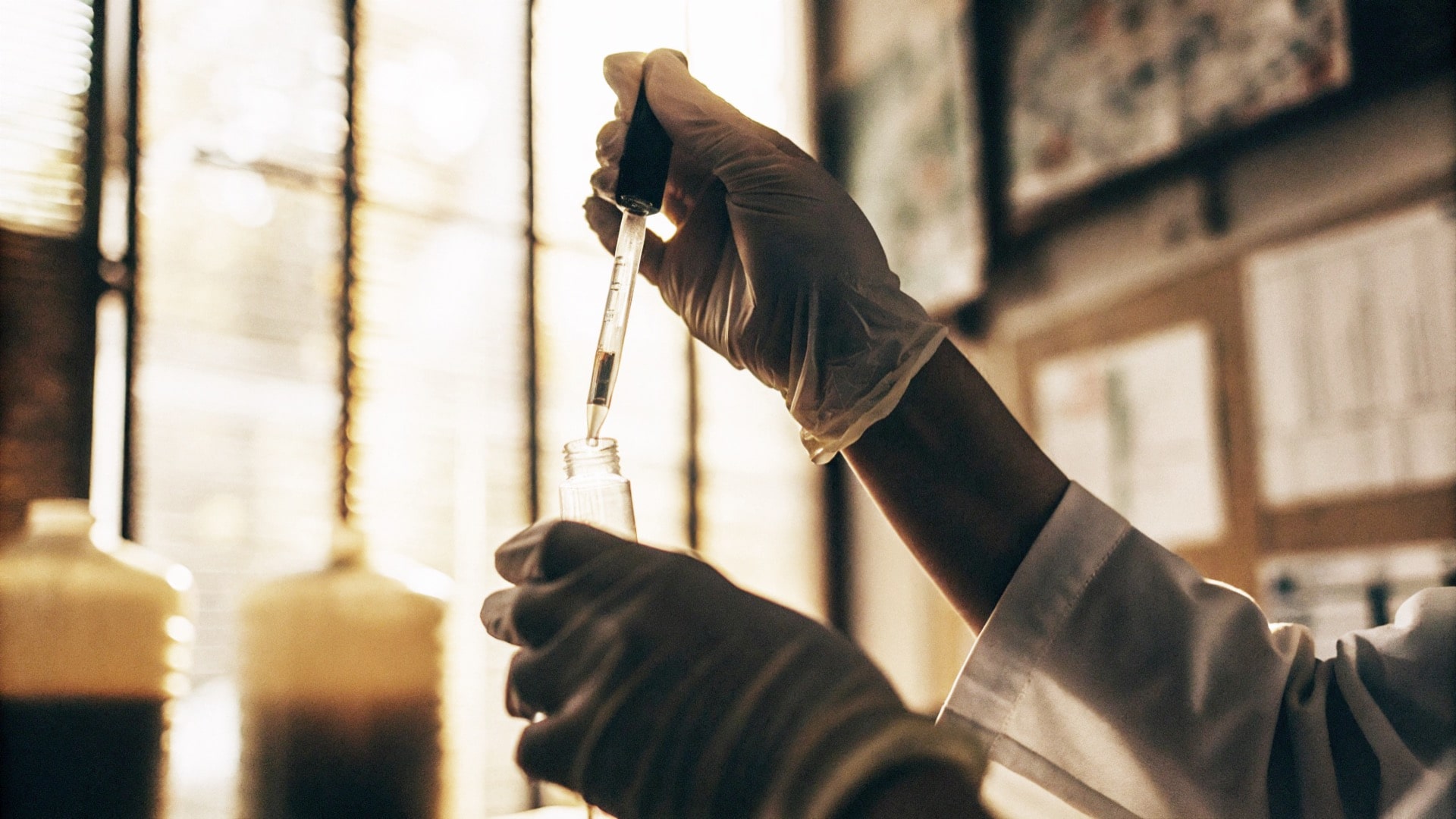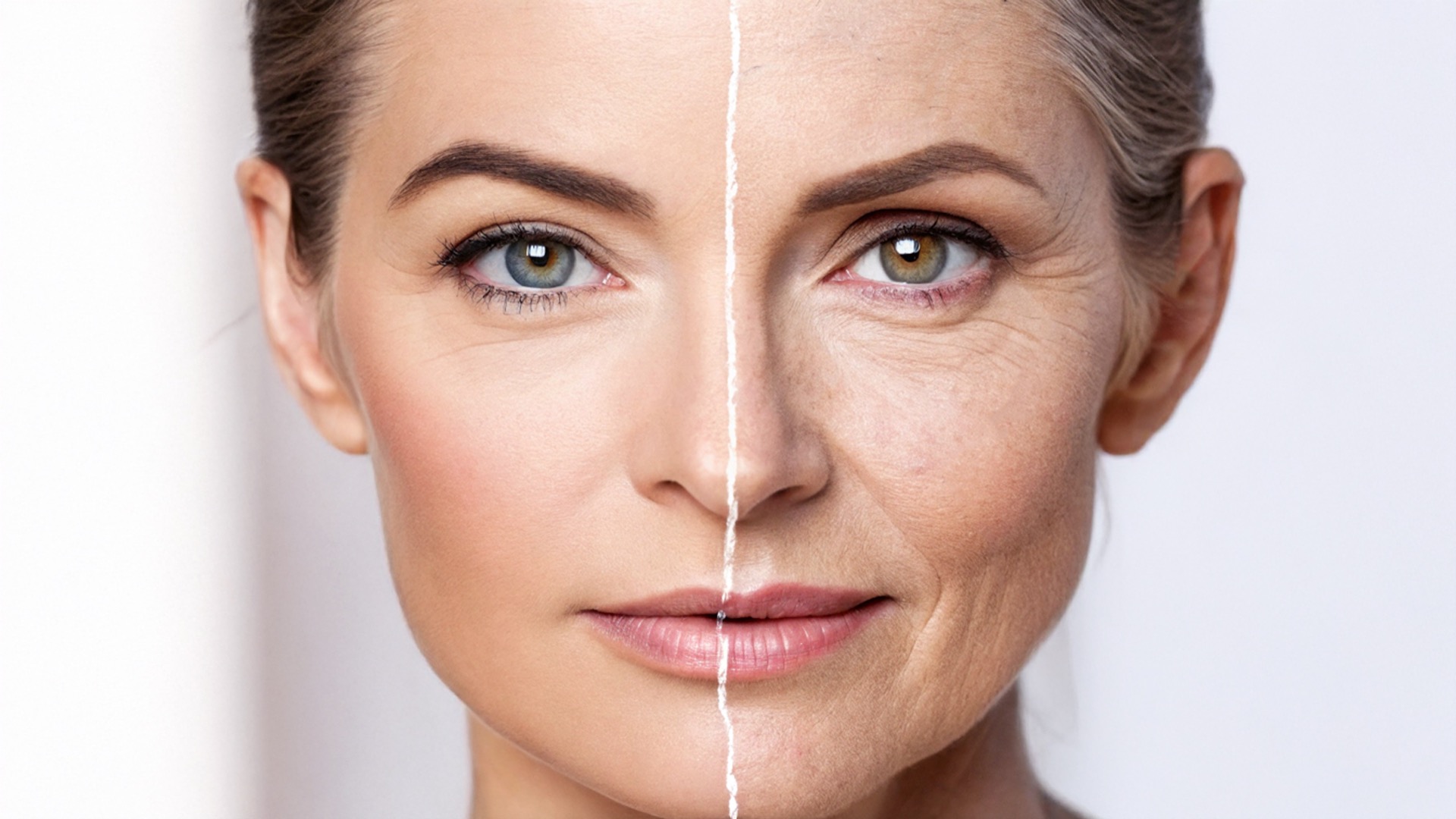Key takeaways
- Biomarkers track how fast you’re aging. These tools go beyond your birthdate to measure biological age at the cellular and molecular levels.
- Epigenetic clocks and blood tests lead the field. Tools such as DNA methylation profiling and proteomic signatures can accurately predict disease risk and lifespan.
- Standardization is key to clinical use. While promising, these biomarkers still face challenges in validation, consistency, and applicability across diverse populations.
Overview
As life expectancy increases and healthcare costs rise, researchers are turning their attention to a deeper question: how do we measure the quality of our aging, not just the length of our lives?
The answer lies in biomarkers of aging, measurable biological indicators that more accurately reflect your body’s functional and cellular health than your chronological age. This emerging field, known as biohorology, is revolutionizing the science of longevity.
From DNA methylation clocks to AI-powered blood panels, scientists are developing advanced tools to estimate biological age, predict disease risk, and assess the effectiveness of anti-aging interventions.
These innovations could soon make tracking your aging process as routine as checking your blood pressure and offer personalized strategies to extend your health span.
What are the biomarkers of aging?
Biomarkers of aging are quantitative measurements (or quantitative parameters) that reflect the biological processes underlying aging and can predict age-related outcomes better than chronological age alone. Unlike simply counting years since birth, these biomarkers assess the accumulated molecular and cellular damage that drives functional decline, disease susceptibility, and mortality risk.
Think of aging biomarkers as biological speedometers and odometers combined. While chronological age tells you how long you’ve been alive, biological age reveals how much wear and tear your body has experienced and how quickly damage is accumulating.
Among the different types of biomarkers, physiological biomarkers are significant. These are well-established, low-cost, and minimally invasive indicators that assess functional health and are widely used in both clinical and research settings.
The concept emerged from a crucial observation: people of the same chronological age can have vastly different health outcomes and life expectancies. Two 65-year-olds might have biological ages of 55 and 75, respectively, explaining why one runs marathons while the other struggles with multiple chronic diseases.
Biomarkers of aging aim to capture how aging affects various molecular, cellular, and physiological systems over time, reflecting the systemic and multifaceted nature of the aging process.
Biomarkers of aging serve several critical purposes:
- Predictive power: Identifying individuals at higher risk for age-related diseases and mortality
- Intervention monitoring: Tracking responses to anti-aging treatments and lifestyle changes
- Research acceleration: Enabling shorter clinical trials by using biomarker changes instead of waiting decades for health outcomes
- Personalized medicine: Tailoring prevention and treatment strategies based on individual aging patterns
Current leading biomarkers of aging
The most advanced tools for measuring biological age go far beyond the calendar. Modern biomarkers of aging, particularly epigenetic clock, and blood-based panels offer unprecedented accuracy in estimating the rate at which your body is truly aging. These metrics not only help predict lifespan and disease risk but also shape the future of personalized care for longevity. Here’s a look at the leading biological age indicators currently redefining aging research and clinical practice.
- Epigenetic clocks: The DNA methylation revolution
Epigenetic clocks represent the most advanced and widely studied biomarkers of aging available today. These tools analyze DNA methylation patterns, which are chemical modifications that control gene expression without altering the underlying DNA sequence.
How epigenetic clocks work: Scientists identified specific sites in the genome where methylation changes predictably with age. By measuring methylation levels at hundreds of these sites, algorithms can estimate biological age with remarkable accuracy, often within 2 to 4 years of chronological age.
Leading epigenetic biomarkers:
- Horvath clock: The pioneering multi-tissue clock using 353 methylation sites
- Hannum clock: Blood-specific clock with 71 methylation sites
- PhenoAge: Incorporates clinical biomarkers for enhanced mortality prediction
- GrimAge: Optimized for predicting lifespan and healthspan
- DunedinPACE: Measures the pace of aging rather than cumulative aging
- Blood-based biomarkers: Accessible and practical
Blood biomarkers provide the most clinically practical approach to measuring biological age, requiring only a simple blood draw that is accessible in any healthcare setting.
AI-powered algorithms analyze routine blood tests (complete blood count, metabolic panel, inflammatory markers) to estimate biological age. These tools can achieve accuracy within 5-6 years using commonly available tests. The advantages of blood biomarkers are:
- Cost-effective: Uses standard laboratory tests
- Minimally invasive: Simple blood draw procedure
- Widely accessible: Available in most healthcare settings
- Longitudinal tracking: Easy to monitor changes over time
- Advanced molecular biomarkers
Beyond DNA methylation and blood chemistry, a new wave of molecular biomarkers is expanding our ability to track aging at a deeper, more dynamic level. Metabolomic and proteomic analyses, along with telomere length measurements, offer insights into how aging affects cellular metabolism, protein regulation, and genomic stability. These advanced tools help researchers and clinicians move closer to a comprehensive, systems-level understanding of biological aging.
- Metabolomic signatures: These analyze small molecules in blood that reflect cellular metabolism and function. Changes in metabolite concentrations can predict mortality risk and the development of age-related diseases.
- Proteomic panels: Measuring protein levels in blood plasma reveals aging-related changes in cellular function, inflammation, and organ system integrity. Some proteomic biomarkers can predict mortality with hazard ratios exceeding 2.0.
Telomere length: While historically significant, telomere-based aging clocks face technical challenges and have shown limited clinical utility compared to newer approaches.
Validation challenges and clinical translation
While biomarkers of aging show great promise in research settings, bringing them into clinical practice remains a major challenge. Most of the current tools lack validation across diverse populations and face significant hurdles related to reproducibility, standardization, and regulatory classification. Without clear frameworks for clinical use, aging biomarkers remain largely exploratory, despite growing commercial interest and early adoption in longevity trials. Some of the challenges include:
- The validation bottleneck
Despite impressive laboratory performance, translating biomarkers of aging to clinical practice faces significant hurdles. Most biomarkers have been developed and tested primarily in populations of European ancestry, raising questions about generalizability across diverse populations.
Key validation challenges include:
- Population diversity: Limited testing in non-European populations
- Standardization issues: Different laboratories may produce varying results
- Outcome definitions: Disagreement on which aging outcomes matter most
- Technical reproducibility: Ensuring consistent measurements across platforms
- Regulatory pathway complexities
Unlike disease-specific biomarkers, biomarkers of aging don’t fit neatly into existing regulatory frameworks. The FDA has established pathways for surrogate endpoints in specific diseases; however, aging affects multiple organ systems and outcomes.
Current status: No aging biomarkers have received FDA approval as surrogate endpoints for clinical trials, though several are being evaluated in research settings and commercial applications.
- Moving toward clinical utility
The field is rapidly advancing toward clinical implementation through several approaches:
- Commercial applications: Companies are already offering aging biomarker testing directly to consumers, though clinical validation remains ongoing.
- Clinical trial integration: Researchers increasingly use aging biomarkers as exploratory endpoints in longevity intervention studies.
- Healthcare integration: Progressive healthcare providers are beginning to incorporate biological age assessments into preventive care protocols.
How aging biomarkers are transforming longevity medicine?
Biomarkers of aging are reshaping the future of longevity medicine by making it possible to measure aging in real time. Rather than waiting decades to assess the effects of an intervention, researchers and clinicians can now track biological changes over shorter timeframes, dramatically accelerating the pace of discovery and treatment. This shift is unlocking more efficient drug development, enabling precision-targeted therapies, and laying the groundwork for a future where aging is proactively managed, not passively endured as:
Transforming aging research
Biomarkers of aging are revolutionizing the study of aging and the testing of anti-aging interventions. Instead of waiting decades to see if a treatment extends lifespan, researchers can now measure biomarker changes over months or years. Pharmaceutical companies can use aging biomarkers to:
- Screen potential longevity compounds more efficiently
- Optimize dosing and treatment protocols
- Identify patient populations most likely to benefit
- Reduce clinical trial duration and costs
Personalized aging strategies
As validation progresses, biomarkers of aging will enable truly personalized approaches to healthy aging:
- Risk stratification: Identifying individuals with accelerated aging before symptoms appear, enabling early intervention.
- Treatment monitoring: Tracking whether lifestyle changes, supplements, or medical interventions are slowing the biological aging process.
- Precision medicine: Tailoring anti-aging strategies based on individual aging patterns and biomarker profiles.
The future of preventive healthcare
The integration of aging biomarkers into routine healthcare could shift medicine from reactive disease treatment to proactive aging management. Regular biological age assessments might become as standard as checking blood pressure or cholesterol levels.
How accurate are current aging biomarkers?
Current biomarkers of aging demonstrate impressive accuracy in laboratory settings, with the most accurate epigenetic clocks achieving mean absolute errors of 2-4 years. However, accuracy varies by:
- Population characteristics: Performance may differ across ethnic groups and geographic regions
- Age ranges: Some biomarkers work better in specific age groups
- Health status: Accuracy can be affected by underlying diseases or conditions
- Technical factors: Sample collection, storage, and processing methods impact results
Clinical context: Although not yet perfect, these biomarkers often predict health outcomes more accurately than chronological age alone, making them valuable tools for both research and clinical applications.
Can biomarkers of aging guide anti-aging interventions?
Emerging evidence suggests biomarkers of aging can track responses to various interventions:
- Lifestyle interventions: Studies show that caloric restriction, exercise programs, and stress reduction can improve aging biomarkers.
- Pharmacological approaches: Clinical trials are testing whether drugs such as rapamycin, metformin, and senolytics can slow biological aging, as measured by these biomarkers.
- Limitations: Long-term validation is still necessary to confirm that biomarker improvements translate into better health outcomes and an increased lifespan.
Bottom line
Biomarkers of aging represent one of the most exciting frontiers in modern medicine, offering unprecedented insights into the biological process of aging. While challenges remain around validation and standardization, the field is rapidly advancing toward clinical applications that could transform how we approach aging and longevity.
The next decade will likely see increased integration of aging biomarkers into routine healthcare, enabling more precise and personalized approaches to healthy aging. As these tools become more accessible and validated across diverse populations, they promise to shift healthcare from reactive disease treatment to proactive aging optimization.
Consider staying informed about developments in this field and discussing biological age assessment with your healthcare provider as these tools become more widely available.
Frequently asked questions (FAQs)
- How much does aging biomarker testing cost?
Costs vary widely depending on the type of biomarker. Basic blood-based aging panels may cost $100-$500, while comprehensive epigenetic clocks can range from $300 to $1,000. As technology advances and adoption increases, costs are expected to decrease significantly.
- Can I improve my biological age with lifestyle changes?
Yes, research suggests that healthy lifestyle interventions, including regular exercise, caloric restriction, stress management, and adequate sleep, can improve aging biomarkers. However, individual responses vary, and long-term effects are still being studied.
- How often should aging biomarkers be tested?
There’s no established standard yet, but many researchers suggest annual or biannual testing could be valuable for tracking changes over time. The optimal frequency likely depends on your age, health status, and whether you’re actively pursuing anti-aging interventions.
- Does insurance cover aging biomarkers?
Currently, most aging biomarker tests are not covered by insurance as they’re considered experimental or wellness-focused rather than medical necessities. This may change as clinical validation progresses and these tools become more integrated into standard healthcare.
- Which aging biomarker is most accurate?
No single biomarker captures all aspects of aging perfectly. Epigenetic clocks currently demonstrate the highest accuracy in predicting chronological age, while different biomarkers may be more effective in predicting specific outcomes, such as mortality risk or disease development. Multi-modal approaches, which combine several biomarker types, show the most promise.
- What are some leading research centers and population-specific studies in aging biomarker research?
Top institutions include the Yong Loo Lin School for gerontology and Winston-Salem for clinical trials. Population-specific studies, like those on South Korean cohorts, highlight ethnic differences in aging biomarkers. The Gerontology Series compiles key research and publications in this field.
References
- Galkin, F., Mamoshina, P., Aliper, A., de Magalhães, J. P., Gladyshev, V. N., & Zhavoronkov, A. (2020). Biohorology and biomarkers of aging: current state-of-the-art, challenges and opportunities. Ageing Research Reviews, 60, 101050.
- Moqri, M., Herzog, C., Poganik, J. R., Biomarkers of Aging Consortium, Justice, J., Belsky, D. W., … & Gladyshev, V. N. (2023). Biomarkers of aging for the identification and evaluation of longevity interventions. Cell, 186(17), 3758-3775.
- Moqri, M., Herzog, C., Poganik, J. R., Ying, K., Justice, J. N., Belsky, D. W., … & Ferrucci, L. (2024). Validation of biomarkers of aging. Nature Medicine, 30(2), 360-372.









